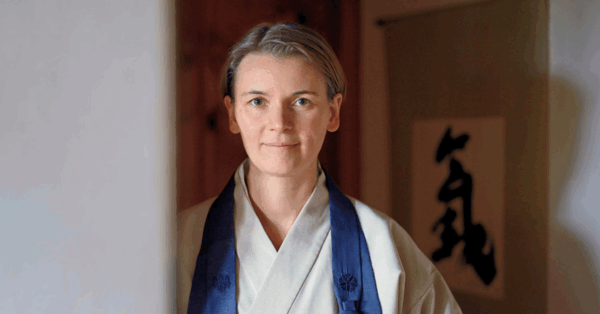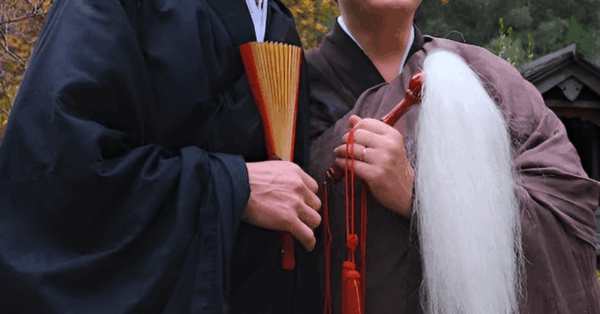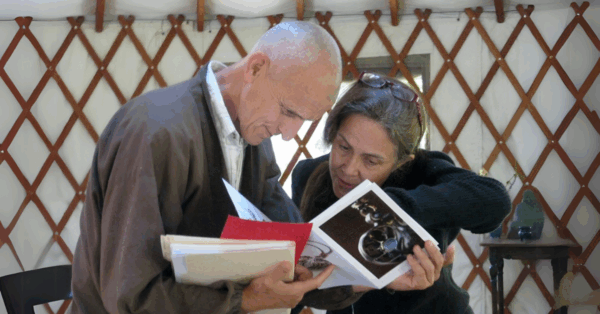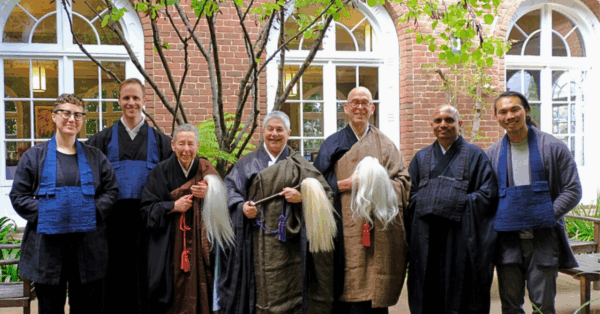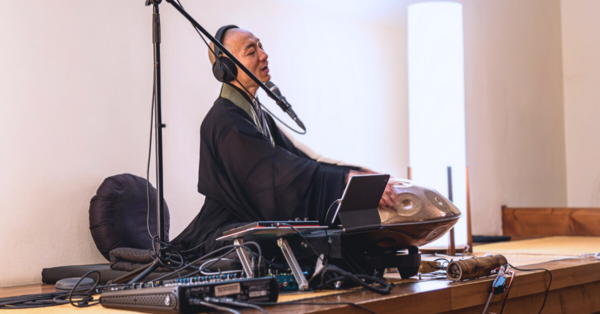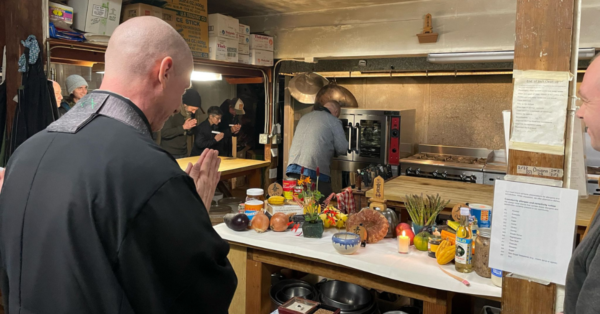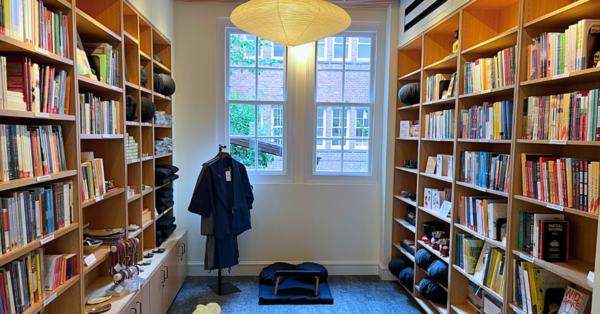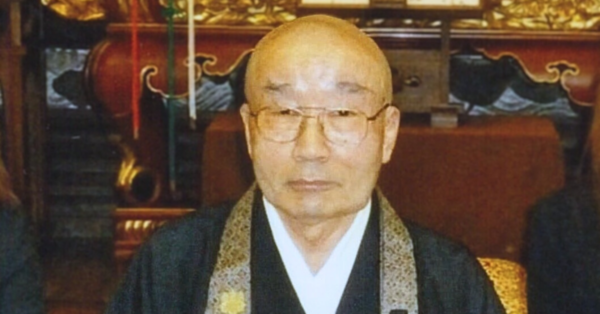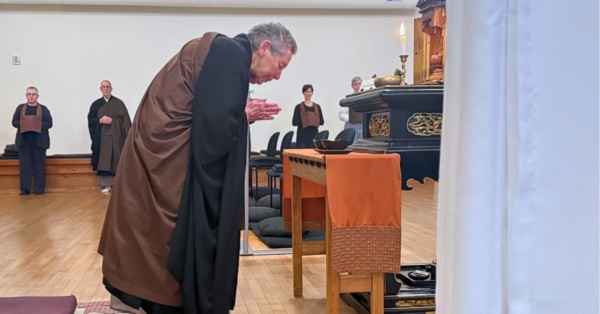An essay by Jody Greene, Zen student, Zen teacher, Professor of Literature. Jody currently serves on the San Francisco Zen Center Board of Directors.
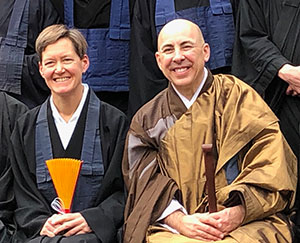
I didn’t set out to be a Zen monk. It was an accident, really. I happened to arrive to do a little volunteer work at Tassajara Zen Mountain Center, on September 10, 2001. When the Twin Towers fell during the first period of meditation on my first morning there, all I could think was, “okay, you’ve got my attention.” My immediate instinct was to start packing. I told one of the teachers I was getting ready to drive back down along the perilous 15-mile dirt road that connects that mountain valley to the rest of the California coastline, jump on a plane, and head straight to New York, the city of my birth.
“That’s just fine,” the monk told me. “But what exactly do you plan to do when you get there?”
That was the first of many lessons Zen would teach me, usually in the form of blows to my sense of self, of self-importance, of urgency and agency. That morning, we went back into the zendo, chanted a service for well-being, and then turned to the work of the day: chopping vegetables, cleaning, fixing up the cabins. Without access in the valley to newspapers, radio, television, cellphones, or (in those days) the internet, all we knew was that a great tragedy had occurred many thousands of miles away, and that many people had died. The community’s response was to do nothing—or rather, to do nothing out of the ordinary. It seemed shocking to me, that they would just keep going about their business while the world burned.
But the world wasn’t burning in that valley.
That was the second lesson.
In the nearly twenty years since my accidental introduction to Zen under conditions of catastrophe, I’ve continued to practice regularly in the tradition, both in periods of monastic retreat at Tassajara and at lay practice centers designed for householders like myself. The Zen tradition is unusual, in that one can enter into periods of monastic retreat—each of the four retreats I have done lasted three months—and then leave the monastery to go”back to the marketplace” as we say when we depart.
The idea is that you are not leaving the world permanently, but practicing so that you can return to live into—at best, to exemplify—what you have learned during periods of extended silence and stillness and relative social isolation. In the best of consequences, you return from this period of intensive training, as the departing monk ceremony says, “with gift-bestowing hands.”
I’ve been thinking a lot during the past month of confinement (with a canine companion, blessedly) about the many ways in which Zen monastic life has provided outstanding training for the experience of sheltering in place as a solitary, healthy, and relatively privileged human in a global pandemic. I have been contemplating the urgency I still feel, after all these years, to do something, my insistent desire to be a resource for others when, truth be told, I have no immediate role to play in healing the sick or feeding the hungry.
I have been turning over (and over) what it might mean to offer gift-bestowing hands when you cannot touch others, and when any material gift you share is in danger of becoming a vector of contagion. Above all, I have been sharply aware of what Zen has taught me about the capacity to find freedom in the midst of constraints and about the importance of learning to find ease and even refuge in oneâ’s own company. Zen can show us how very deeply we dread the simple act of sitting down with ourselves and, at its most compassionate and loving, Zen can help us learn not to be so afraid of the workings of our own minds. The last of these, on any given day, may be the greatest gift that Zen has to bestow.
Zen training is designed to break you, to strip you of the habits, tricks, and workarounds we all use to escape from things as they are, or, as Tassajara founder Shunryu Suzuki Roshi put it, “things as it is.” Zen’s ferocity and austerity are legendary. From its mind-bending koans to its 16-hour a day (as at Tassajara) retreat schedules, its mode of training depends upon negotiating a set of restrictions on communication, movement, and sovereignty over time, space, and freedom of choice. “Picking and choosing” is the first thing you renounce when you become a student of Zen.
You meet regularly with a teacher, to whom you commit to laying bare both the terrain of your own mind and the behaviors and activities you engage in. There is no place to run away to and no place to hide. The teacher is a mirror, who attempts to reflect you back to yourself with as little distortion as possible. For most of us, the desire to look away, to escape from simply seeing and being ourselves, is overwhelming.
When you enter Zen monastic training at Tassajara, you agree to follow a schedule that begins at 4 am and ends at 9 pm. You do not speak until 1 in the afternoon. You eat all your meals in the zendo. You wear robes unless you are working. There is very little “personal time.” This is, after all, the point; you are there to study all the ways that the self attempts to organize the world to suit its personal preferences, to exert control, to stack the deck in favor of what it believes, in its dreamlike state, will lead to its own unceasing and unfailing happiness.
In a Zen community, your practice requires an extreme level of silence and solitude, but in that contrived state of isolation, you come to understand how much you have been fruitlessly trying to separate your personhood and its priorities from others all along.
While the regular monastic schedule is undeniably intense, for a week out of each month, the intensity increases, during periods known as sesshin—literally, “touching the heart-mind.”
During these periods, you do not speak to, make eye contact with, or touch others, and you may not read, write, or draw. Once or twice a day, you may have 30 minutes to nap or take a walk. Your only intimacy is with that heart-mind of yours; as the liturgy says, this is a time to gather your scattered energies, to
settle the self on the self.” You sit up to 15 periods of meditation, or zazen, each day. If you have the energy and the permission of your teacher, you go back to the zendo and sit with yourself late into the night.
During each period of zazen, you are asked to remain completely still, usually for 30-40 minutes at a time. Beyond following the breath, there is no instruction—nothing to do, to think, or to accomplish, and no way to get it right. No mantra, no visualization, no sequence of inner rituals. There is nothing to do but be. As one venerable Zen teacher, Shohaku Okamura, says, always with a half-smile on his face, “Zazen is good for nothing.”
The discomfort of simply sitting with your own body, heart, and mind for 40 minutes can be extreme, even unbearable. To do this all day, for many days, months, or years on end, is a profoundly transformative experience, one that leaves you with no doubt whatsoever about the inevitability of your own death and the extraordinary yet strange gift that is a human life.
An unexpected thing happens over the course of a sesshin, not always, but surprisingly often. Somewhere along the way, you stop fighting, stop focusing on the constraints and limitations, start finding small openings where there appeared to be nothing but contraction. You start noticing things you’d never noticed before, from the light as it moves across the white walls of the zendo in different parts of the day to the weight of one hand resting completely in the palm of the other. You begin to be aware of the sensation of your ribs expanding with each breath or the sound of squirrels’ claws on the roof or the way the birds start to sing exactly as the first warmth of morning hits the valley wall.
Perhaps most curiously, you become aware of your own capacity to communicate with the other humans with whom you are sharing the retreat. Even though you cannot look at each other or speak, and only bow as you pass each other on the path, each bow begins to vibrate with care, attention, and love. Connection reaffirms its presence in the midst of only apparent isolation.
Zen is a training in becoming intimate with yourself, but in the process it makes you intimate with the other beings with whom you share your immediate world as well—human, not human, animate, inanimate. There is a tenderness that builds in the midst of Zen austerity and rigor that softens the sense of isolation and soothes the terror of being thrown back upon the self.
Just as many of us who are socially isolated are greeting each other with renewed vigor in the street and thanking those we should have been thanking all along—postal service workers, delivery truck drivers, grocery store clerks, sanitation workers, and all those other essential persons whose labor our lives rely on—we become just a little more aware of our already existing interconnectedness when confronted by the mirror of enforced social distancing.
Still, social distancing, like a Zen sesshin, is a stern teacher, and the conditions much of the world is living under are unprecedentedly draconian. In Wuhan, some people were not allowed to leave their apartments for 74 days. I ask myself if I could endure such a thing. No matter how many retreats I’ve sat, I’m humbled by the fear that arises when I imagine being faced with this challenge and having to find the inner resources to respond.
Yet draconian etymological roots lie with the dragons. Who is the dragon we face when, by choice or by decree, we withdraw from the world for a time and sit down quietly in the company of our own hearts and minds? What would it mean to befriend that dragon and to take her as our teacher?
A beloved Zen koan insists, “every day is a good day.” I worry that the aphorism rings somewhere between outrageous and obscene, in a time of so much suffering and loss, and yet it has been in my head a lot these days, a quiet pulse of words within the silence.
The teaching does not mean that every day is happy, easy, or pleasing to my personal preferences. It means, as I understand it, that when I am willing to be intimate with the circumstances arising right now, no matter how difficult or perilous, no matter how constrained, when I am willing not to turn away or to try to escape, at that moment I begin to live my life.
Wishing that this day were another or a “better” day is tantamount to wishing my life away. It is a way of refusing to take care of the life I have, which seems like a terrible response in a time when so many are dying. Every day is a good day because this day is the only day I have, and because having a day, no matter how grief-stricken, terror-filled, or dragon-faced, is a gift, even in the midst of a pandemic.
The whole world is paying attention, right here and right now. Many of us—the fortunate ones, anyway—have spent the last month sheltering in place, alone yet together. It looks like we’ll be engaged in this enforced retreat into our own company for some months to come. When this is all over, and it’s time to go back to the marketplace, I wonder what we’ll do with our gift-bestowing hands.


